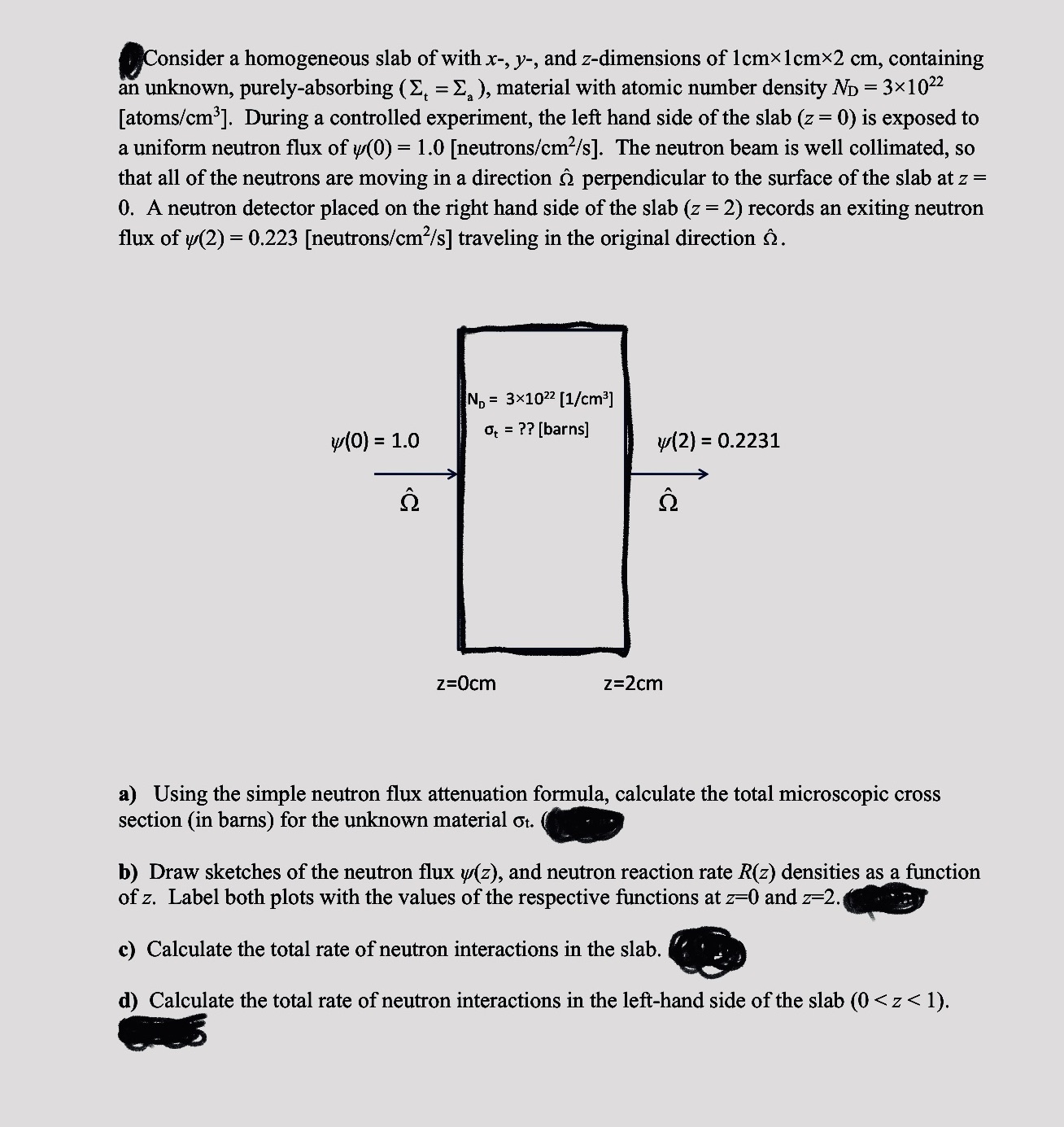== Consider a homogeneous slab of with x-, y-, and z-dimensions of 1cm1cm2 cm, containing an unknown, purely-absorbing (, = ), material with atomic

== Consider a homogeneous slab of with x-, y-, and z-dimensions of 1cm1cm2 cm, containing an unknown, purely-absorbing (, = ), material with atomic number density ND = 31022 [atoms/cm]. During a controlled experiment, the left hand side of the slab (z = 0) is exposed to a uniform neutron flux of y(0) = 1.0 [neutrons/cm/s]. The neutron beam is well collimated, so that all of the neutrons are moving in a direction perpendicular to the surface of the slab at z = 0. A neutron detector placed on the right hand side of the slab (z = 2) records an exiting neutron flux of y(2) = 0.223 [neutrons/cm/s] traveling in the original direction . N = 31022 [1/cm] \(0) = 1.0 = ?? [barns] z=0cm z=2cm y(2) = 0.2231 a) Using the simple neutron flux attenuation formula, calculate the total microscopic cross section (in barns) for the unknown material ot. b) Draw sketches of the neutron flux y(z), and neutron reaction rate R(z) densities as a function of z. Label both plots with the values of the respective functions at z=0 and z=2. c) Calculate the total rate of neutron interactions in the slab. d) Calculate the total rate of neutron interactions in the left-hand side of the slab (0 z < 1).
Step by Step Solution
There are 3 Steps involved in it
Step: 1

See step-by-step solutions with expert insights and AI powered tools for academic success
Step: 2

Step: 3

Ace Your Homework with AI
Get the answers you need in no time with our AI-driven, step-by-step assistance
Get Started


